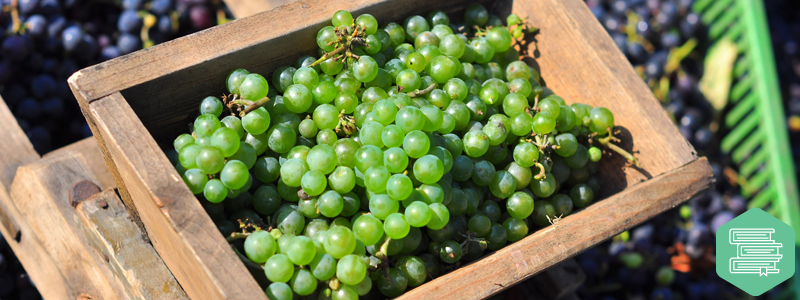Each month New York Times critic Eric Asimov is conducting a wine lesson for his readers. Our writer Sara Ivry is participating and writing about the experience for VinePair.
It was the Sunday of Memorial Day Weekend, the first really hot spring day, and I had been up since approximately 4:37 when a throaty staccato of “Ma, Ma” jolted me awake. The day would be long. By 10 am, we were at the Central Park Zoo, festive and crowded, watching sea lions swim laps. By 2 we were in the subway back to Brooklyn. By 4:30 we were in a playground where I hoped so much energy would be expended on swings and slides and trying, at 18 months, to jump rope that my child would fall asleep early. It was the kind of summer day where time briefly seems endless and the day brims with carefree possibility.
Well, that’s how those summer weekend days used to unfold. Now, with a kid, the sense of carefree is elusive and by 5 pm on a weekend, I am already yearning for bedtime — both of ours.
But on that Sunday, my Sancerre was in the fridge yet to be cracked open. It had been there for some time. Between family funerals (two in a single month) and pure exhaustion, it has been hard to imagine delaying bedtime for even something as beloved as a glass of wine. But time is precious and before long, wine school would reconvene with a new lesson. Sancerre had to be drunk.
Until a few weeks ago I thought I loved Sancerre. I thought of it as a dry white — smooth and slightly citrusy, like a Riesling or a Grüner. I drop those names as if I really could identify them in a blind test. I am sure I cannot. I am sure, too, that I have had them and liked them in the moment but having now started this wine exercise I wonder if I’d like them still or in drinking them and thinking about them, I’d find some flaw. Now they’re too sweet. Now they have too much acid. Now they have a fragrance I find distasteful.
But let’s return now to Sancerre. What happened a few weeks ago was I had lunch at a Legal Seafood in the North Shore Mall in Peabody, Massachusetts with some relatives. We had just buried my great aunt. And we decided to make a toast to her. I ordered Sancerre and someone said… “Oh, you like sweet wines.” And this comment seemed to sour my feelings about Sancerre. Why? I suppose I look askance at people with sweet wine affinities (excepting, that is, dessert wines). Somewhere, someone told me sweet wines are for rubes and I don’t want to admit that I might be in that crowd.
Then, I reread Eric Asimov’s directions about the Sancerre. He says Sancerre is the white equivalent of Beaujolais, and frankly the Beaujolais left little impression on me for good or ill.
I was practically determined to disdain it. Then I took a sip. Oh happy day!
At first, the Sancerre had a tartness I love. It was only slightly fruity, bringing to mind a mild citrus like a melogold or an oroblanco. Its sting refreshed me, especially when it hit the top of my throat, a sting so sudden it almost seemed like more of a gesture, but with a crispness that impressed and pleased me. There seemed to be no tannins, no residue on my tongue. The wine nearly startled my mouth awake with glorious brightness.
At times, the Sancerre had a fizziness that surprised me as I ate leftover chicken and salad. It was inconsistent — that fizz — but I didn’t mind.
The Sancerre grew sweeter as the night wore on, the wine warmed up, and I reached the dessert part of the meal. Reader, drink wine and devour black licorice at your own peril. Suddenly what was brisk with a sly, sweet tang became cloying. I needed water. I needed a cracker. I had both and they did the trick. But now, when I returned to my Sancerre, it had lost its refreshing quality. It no longer held any surprise. I wanted to get back to that initial hello, bracing and full of small wonder.
Is there a wine that’s slightly fruity but mild? I don’t want overripe bananas. I want restraint. I had thought maybe the answer lies in a bottle of Sauvignon Blanc but then my wine tutor (Asimov is the teacher, but for tutorials, I turn to my pal Adam Teeter, of this here site) explained that Sancerre is made from Sauvignon Blanc grapes. That is, they are the same wine, but Sancerre is produced in a particular region of France while Sauvignon Blanc uses the same grapes as Sancerre, but is produced elsewhere.
The second night I drank my Sancerre, I hoped to find it as bracing as it had been the night before. It was not to be. I don’t know what to blame. Was it the pre-dinner snacks I’d nibbled — everything from leftover fish sticks from my child’s plate, to Israeli pickles? Was it my mood? Was it the wine’s temperature? Or the room’s? It’s not that it wasn’t good, it was fine. It went down easy and had a little bite. It was drinkable. That occasional tiny jolt of extra sweetness didn’t stop me from enjoying it. But I was not in love. I was in solid like.
It was simply fine, but I’ve come to see I crave excellence.
Sara Ivry works at Tablet Magazine, where she hosts Vox Tablet, its weekly podcast on arts and culture. A longtime freelancer, she has contributed pieces to the New York Times, the Boston Globe, Real Simple, Medium, Design Observer, Bookforum and other publications.
Header image via Shutterstock.com

